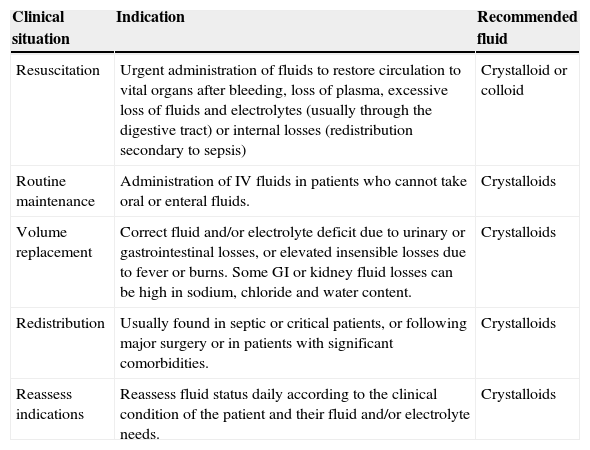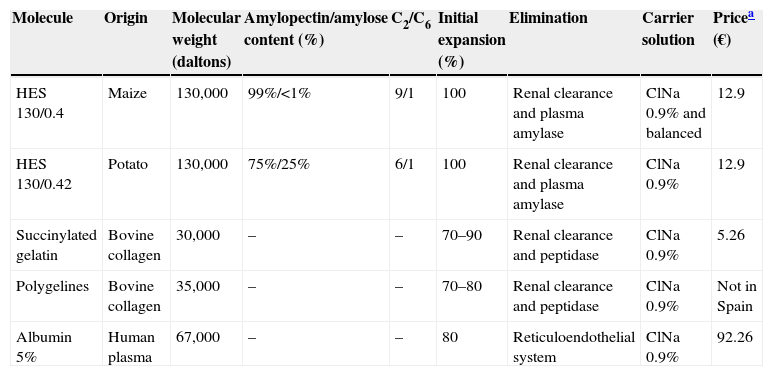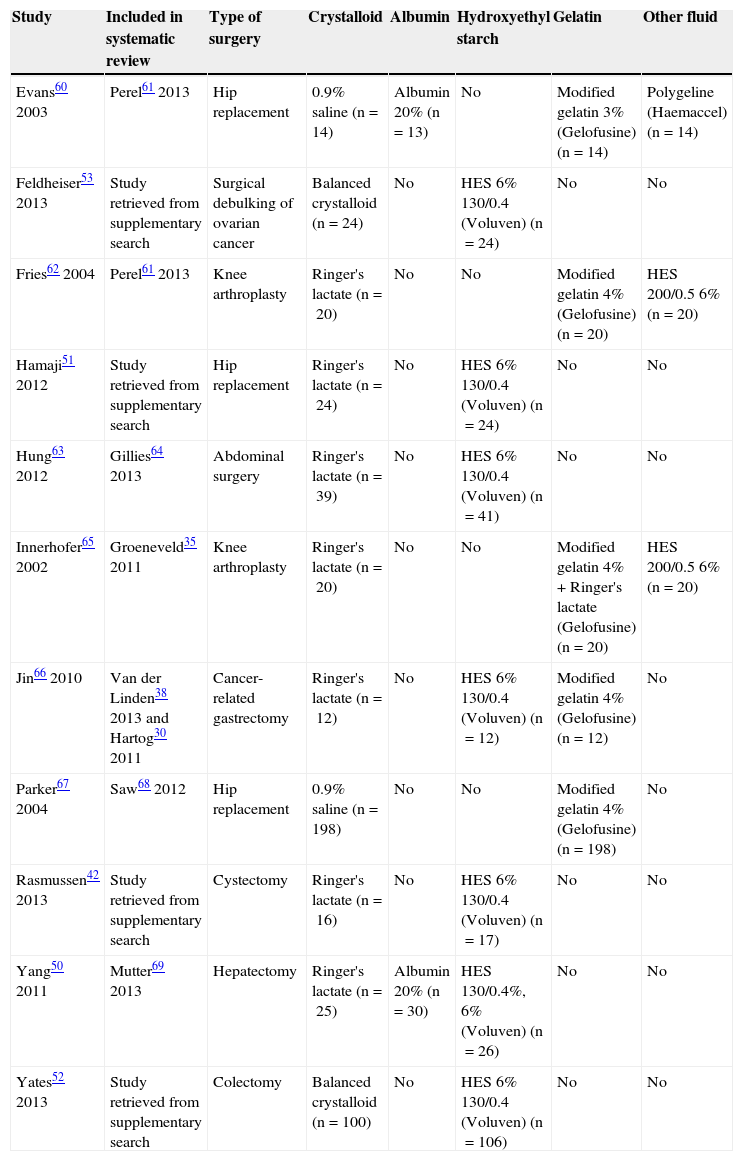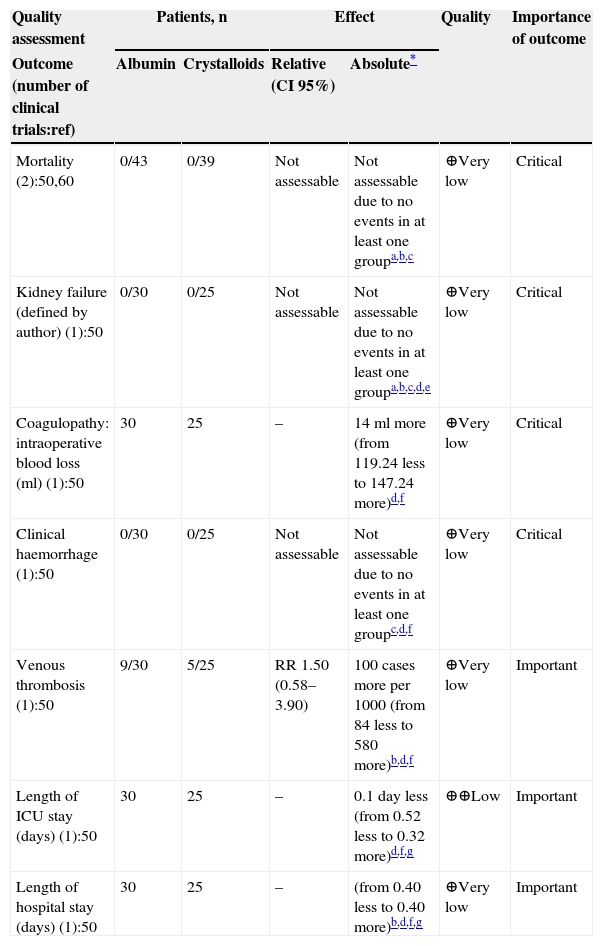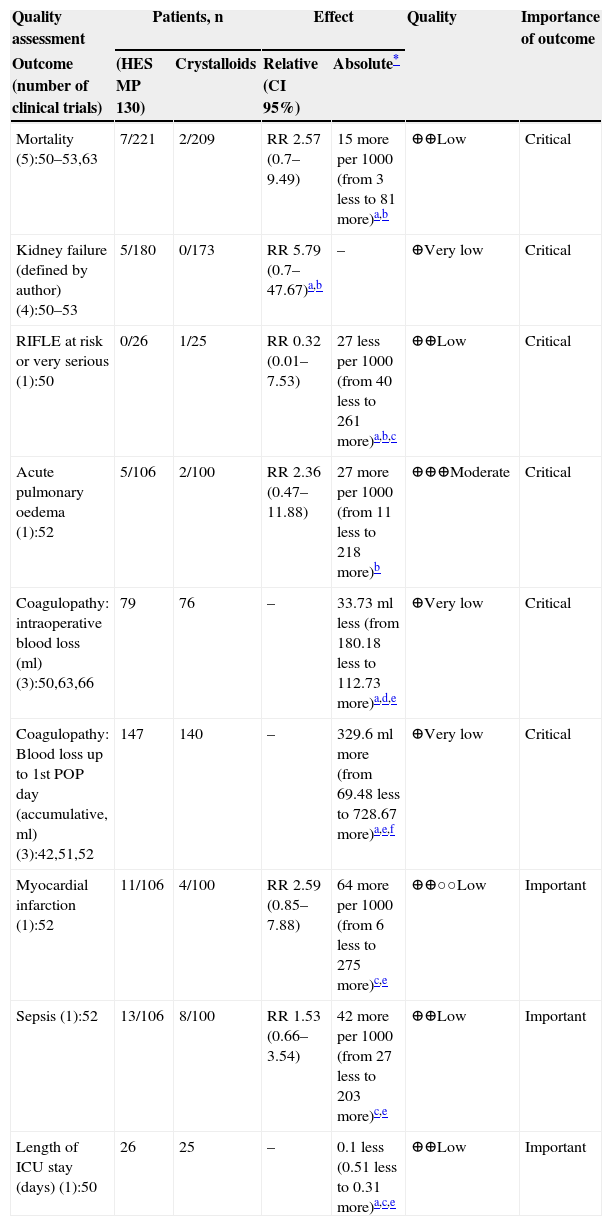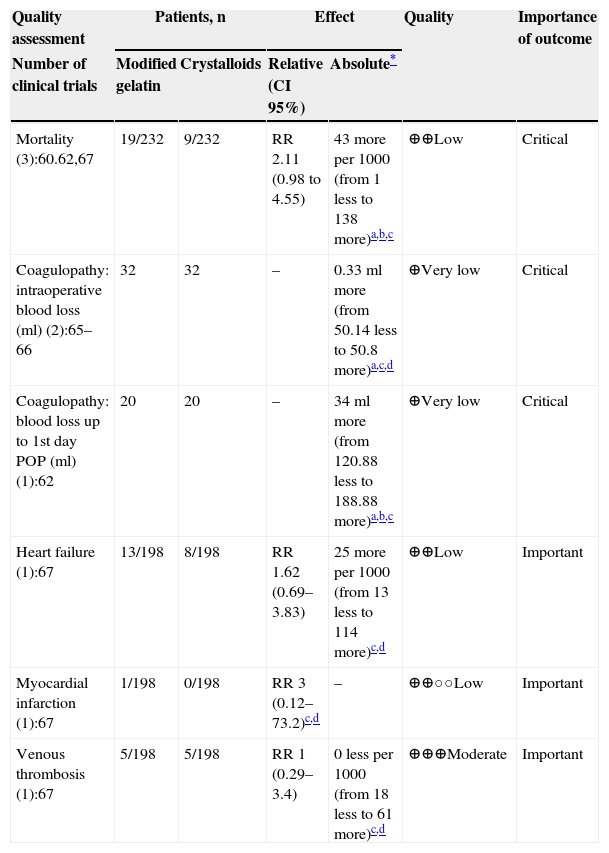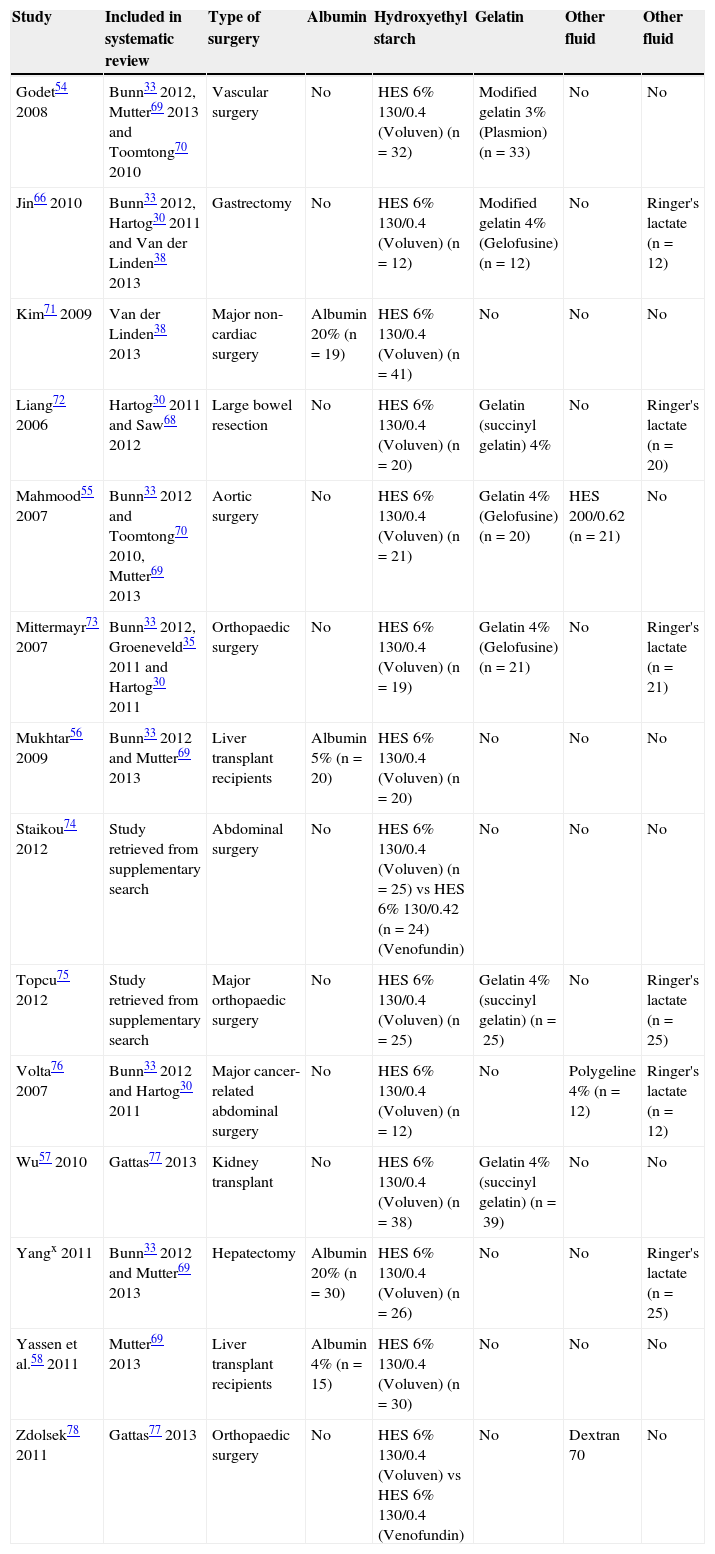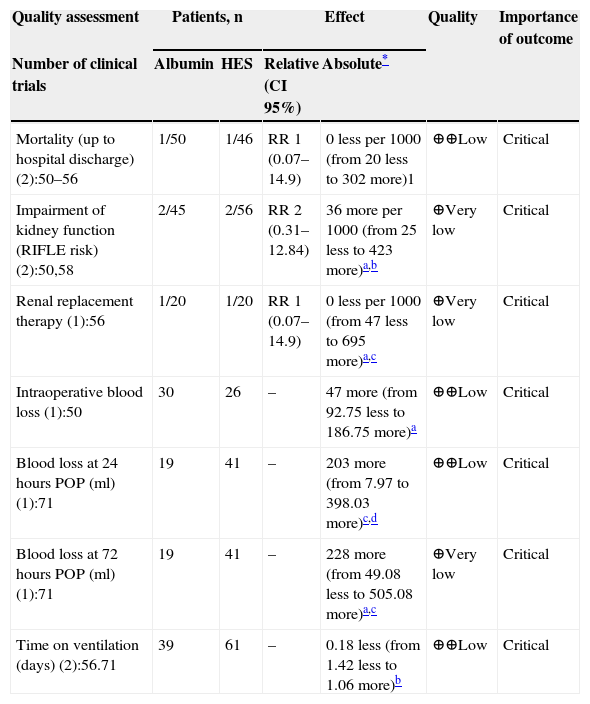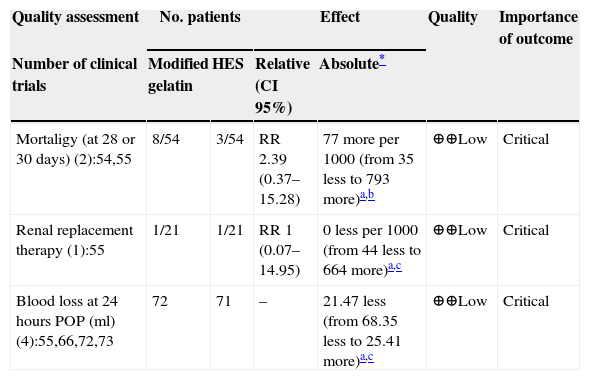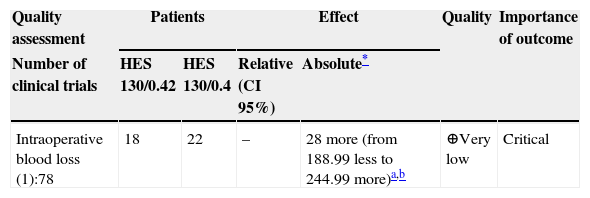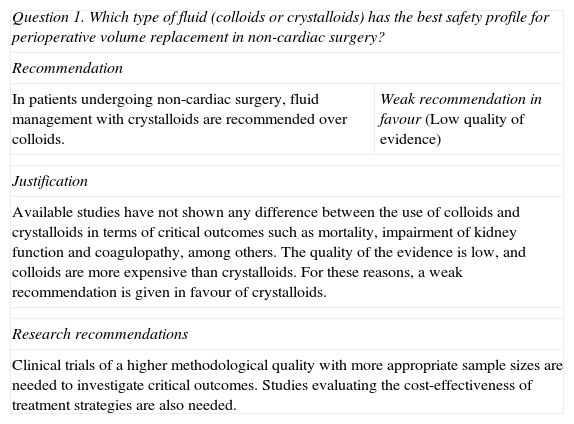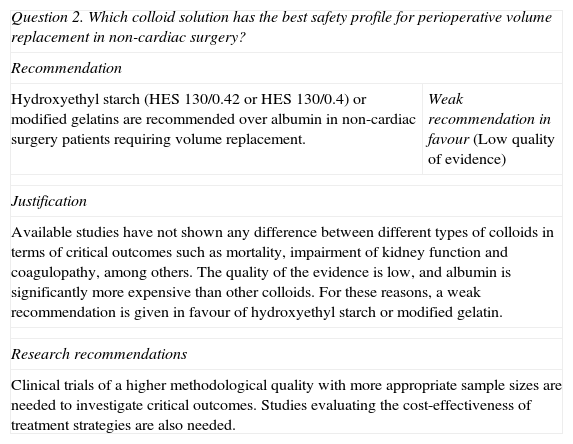The present clinical practice guide responds to the clinical questions about security in the choice of fluid (crystalloid, colloid or hydroxyethyl starch 130) in patients who require volume replacement during perioperative period of non-cardiac surgeries. From the evidence summary, recommendations were made following the GRADE methodology. In this population fluid therapy based on crystalloids is suggested (weak recommendation, low quality evidence). In the events where volume replacement is not reached with crystalloids, the use of synthetic colloids (hydroxyethyl starch 130 or modified fluid gelatin) is suggested instead of 5% albumin (weak recommendation, low quality evidence). The choice and dosage of the colloid should be based in the product characteristics, patient comorbidity and anesthesiologist's experience.
Esta Guía de Práctica Clínica responde a preguntas clínicas sobre seguridad en la elección de fluido (cristaloide, coloide o Hidroxietilalmidón 130) en pacientes que precisan restauración volémica en el periodo perioperatorio de cirugía no cardiaca. A partir del resumen de la evidencia, se elaboraron las recomendaciones siguiendo la metodología GRADE. En esta población se sugiere la fluidoterapia basada en la administración de cristaloides, (recomendación débil, calidad de la evidencia baja). En las situaciones en las que la restauración volémica no se alcance sólo con cristaloides, se sugiere utilizar coloides sintéticos (Hidroxietilalmidón 130 o gelatina fluida modificada) en lugar de Albúmina 5% (recomendación débil, calidad de la evidencia baja). La elección y dosificación de coloide deberán basarse en las características del producto, comorbilidad del paciente y experiencia del anestesiólogo.
Artículo
Comprando el artículo el PDF del mismo podrá ser descargado
Precio 19,34 €
Comprar ahora








